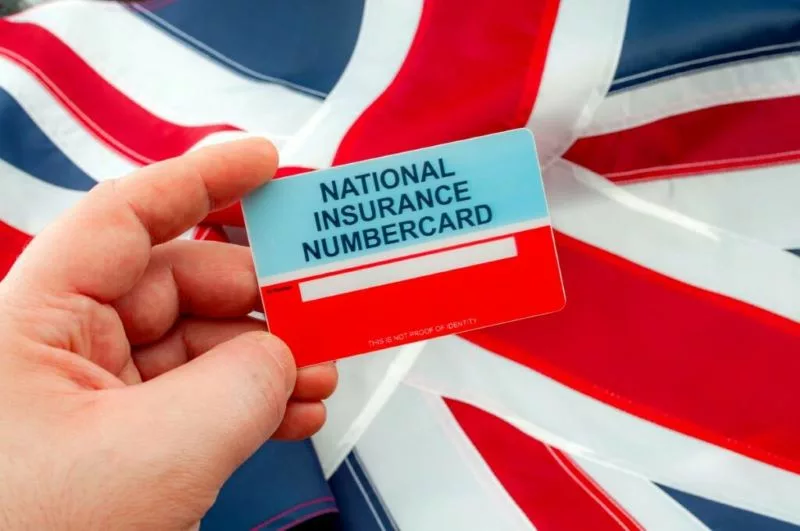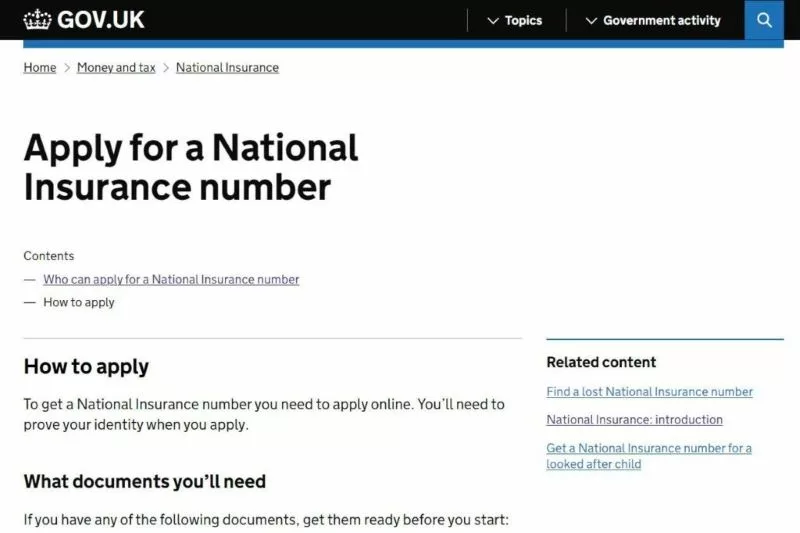Starting a new job in the UK? There’s a critical piece of the puzzle you won’t want to miss: your National Insurance Number (NINo). This personal ID ensures your tax contributions and National Insurance payments are meticulously tracked.
If you weren’t handed an NI number automatically at 16 or if you are an expat, you must apply for it. Let us guide you through the process of obtaining a national insurance number. From its eligibility criteria to the actual application for a national insurance number, we’ve got you covered.

- What Is a National Insurance Number (NINO)?
- When Will I Need To Show My National Insurance Number (NIN)?
- Who Can Get a National Insurance Number?
- How To Get a National Insurance Number
- How Long Does It Take To Get the National Insurance Number?
- What Shall I Do If I Lost My NIN?
- A Key Identifier for Accessing Government Services
- FAQ
What Is a National Insurance Number (NINO)?
Issued by the Department for Work and Pensions (DWP) and administered by HM Revenue and Customs (HMRC), a National Insurance Number (NINO) is a unique nine-digit identifier used for social security purposes.
Similar to a Social Security number in the US, the national insurance number is crucial for employment in the UK; it enables you to work and to track your National Insurance contributions. These payments are key if you want to access some government services and benefits, such as the New State Pension, Maternity Allowance, New Style Jobseeker’s Allowance, and Bereavement benefit.
The benefits you’re eligible for when you pay national insurance contributions are directly linked to your employment status and yearly income.
How Many National Insurance types or “classes” are there?
There are four main classes. Here is a comparative table that shows the main differences between them:
| Class | Contributors | Paid by | How it is Paid | How Much You Pay | Main Benefits |
|---|---|---|---|---|---|
| Class 1 | Employees under State Pension age earning above £242 a week (for one job) | Employers and employees | Deducted from salary by employer | Varies by earnings. From £1,048 to £4,189 a month, you pay 10% until April 2024. If you earn over £4,189, you pay 2%. | State Pension, Jobseeker’s Allowance, Employment and Support Allowance, Maternity Allowance, Bereavement Support Payment |
| Class 2 | Self-employed people with profits above a small earnings threshold (£12,570 a year) | Self-employed individuals | Small fixed weekly amounts or one payment done at the time of submitting your online Self-Assessment | £3.45 a week for tax year 2023 to 2024 | State Pension, Maternity Allowance, Bereavement Support Payment |
| Class 3 | Voluntary contributions to fill or avoid gaps in your National Insurance record | Individuals | Set rate per week or one payment done at the time of submitting your online Self-Assessment | Voluntary payment | State Pension |
| Class 4 | Self-employed people with profits above a certain threshold | Self-employed individuals | Calculated as a percentage of annual profits | 9% on profits between £12,570 and £50,270. 2% on profits over £50,270 | State Pension, Maternity Allowance, Bereavement Support Payment |
If you are self-employed and earning from £6,725 to £12,570 in 2024, Class 2 contributions are now treated as having been paid. This means you won’t have to pay anything to protect your National Insurance record. Those who earn less than £6,725 don’t need to pay anything but can choose to pay voluntary Class 2 contributions.
Are you unemployed? You may want to look into getting National Insurance Credits or paying Class 3 contributions to avoid gaps in your NI record.
When Will I Need To Show My National Insurance Number (NIN)?
Your National Insurance number is a crucial identifier in the UK, required in various scenarios:
- Looking for work
- Studying
- Managing your taxes
- Opening a bank account for tax purposes
- Applying for a driver’s license
- Proving your identity when you register to vote and get a permanent voter’s card
- Making contributions towards the National Health Scheme (NHS)
Who Can Get a National Insurance Number?
To apply for a National Insurance number in the UK, you must be 16 or above, reside in the country and be either a UK citizen, a permanent resident or have the right to work. People out of work, actively seeking employment, or with a job offer can also apply for a nino.
If you’ve always lived in the UK, you likely received your NIN before turning 16. The National insurance card is no longer printed. For those with a visa, check the back of your Biometric Residence Permit (BRP) for your NIN.
How To Get a National Insurance Number
To apply for a UK NI number online, visit the government’s online application portal and follow the instructions carefully. Provide accurate information as this will be crucial for identity verification in various government processes.
Alternatively, you can apply by post. Download, fill out, and mail the form available on the website. If you encounter difficulties, you can contact the HMRC helpline for assistance. They’ll guide you through the process to get, recover, or replace your NIN.

What Documents Do I Need To Get a NIN?
To apply for a National Insurance number, you will need the following documents:
- A valid identification document, such as a passport from another country, a Biometric Residence Permit (BRP), or a national ID card from any EU country or Liechtenstein, Switzerland, or Norway
- A photo of yourself holding your passport
- Pictures of another ID document
- Access to a smartphone, tablet, or computer
- Your home address number
If you don’t have these documents, an in-person appointment may be necessary.
How Long Does It Take To Get the National Insurance Number?
After applying for a National Insurance number, it may take up to four weeks to get your National Insurance number. You’ll receive an email with a reference number upon successful application.
Depending on your initial document submission, you might need to provide additional documentation or attend an in-person appointment for identity verification.
What Shall I Do If I Lost My NIN?
Are you desperately googling ‘How to find my national insurance number?’ Don’t despair. If you lost your National Insurance number, first check any official documents you have, like tax forms, P60, or payslips, as your NINO might be listed there. Alternatively, the HMRC App or your personal tax account are convenient online options to retrieve it.
Have you been unable to find your NINO? You can download and complete the form below to request written confirmation of your NINO. You must post the complete form to HMRC:
A Key Identifier for Accessing Government Services
The National Insurance number is a unique identifier that allows you to verify your identity, track your National Insurance contributions, and check your tax records. Additionally, it plays a critical role in accessing government services and ensuring entitlement to state benefits.
This guide has outlined the essentials of obtaining, using, and safeguarding your National Insurance number. Whether you’re new to the UK or a long-time resident, understanding the role and importance of this number is crucial for your financial and legal responsibilities.
FAQ
Can You Work Without National Insurance Number?
Everyone working or planning to work in the UK must have a National Insurance Number. However, you may start work without a National Insurance number if you can prove you have the right to work. This can be done with your BRP or a share code you can get online when you follow the link above.
Where Can I Find My National Insurance Number?
Your National Insurance number can be located in various places: payslips; P60; in correspondence related to your tax, pension, or benefits; within the HMRC app; in the National Insurance section of your personal tax account; and your Apple or Google Wallet (if you previously saved it from your personal tax account).
Do You Have To Pay for NINo?
Applying for the National Insurance number is free, except for postage costs if mailing your application.
How Long Does Your NINo Last?
Your National Insurance number is valid for life.





